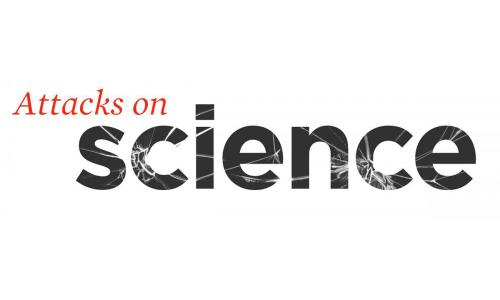After meeting with and listening to talking points from Dow Chemical Company, the maker of the pesticide chlorpyrifos, the EPA announced it would reverse its decision to ban the chemical, which is linked to neurological developmental issues in children.
What Happened
On March 29, 2017, EPA Administrator Scott Pruitt announced that his agency would decline to ban chlorpyrifos, despite years of scientific study and deliberation indicating that the pesticide poses a clear risk to children, farmworkers, and users of rural drinking water. This was a 180-degree turn from the science-based conclusion reached just a few months before by the EPA Office of Chemical Safety and Pollution Prevention, which found that chlorpyrifos has harmful effects on children’s brain development. Both EPA scientists and the American Academy of Pediatrics have urged the EPA to ban the insecticide.
Pruitt’s reason for the EPA’s decision? The Federal Register notice stated that “the science addressing neurodevelopmental effects remains unresolved and… further evaluation of the science … is warranted.” However, the EPA, along with independent scientists, had already demonstrated the gravity of the pesticide’s impacts on children. The science is not in question. Jim Jones, who ran the EPA chemical safety division for five years, told the New York Times he was disappointed by the decision: “They are ignoring the science that is pretty solid” and would put farm workers and exposed children at “unnecessary risk.” The EPA’s decision was politically motivated, and what could be more motivating than the money, power, and influence of Dow Chemical Company within the Trump Administration?
The full story of Dow Chemical’s involvement in Pruitt’s chlorpyrifos decision is still being uncovered. But the circumstantial evidence of the weeks and months leading up to the decision are highly suggestive. Dow Chemical gave $1 million to fund President Trump's inaugural activities, and its chairman and CEO, Andrew Liveris, was a key advisor to the Trump Administration, heading up the president’s since-disbanded American Manufacturing Council. In fact, when Trump signed a February executive order creating federal agency task forces in charge of choosing regulations to roll back, Liveris was standing behind the president. "Andrew, I would like to thank you for initially getting the group together and for the fantastic job you've done," Trump said while signing the order and handing the pen to Liveris as a souvenir.
Dow spent more than $13.6 million on lobbying in 2016 and had spent over $5.2 million in the first quarter of 2017, advocating with the EPA, the White House, and both chambers of Congress for a variety of policies, including chlorpyrifos’ regulatory status. In June, it was revealed that Administrator Pruitt met with the CEO of Dow Chemical before making his decision to allow continued use of chlorpyrifos across the US. And at a March 1 meeting with members of the American Farm Bureau Federation during which chlorpyrifos was a major focus, Pruitt “stressed that this is a new day, a new future, for a common-sense approach to environmental protection” and that the administration “is looking forward to working closely with the agricultural community.”
After the decision was announced, lawyers representing Dow sent a letter to the EPA, Department of Interior, and Department of Commerce asking Pruitt, Secretary Ryan Zinke and Secretary Wilbur Ross, respectively, "to set aside" the results of government studies showing that the insecticide is harmful to children’s health. The details of this case point to the government prioritizing special interests over independent science, turning what should have been a science-based decision into one driven by political favor.
Why It Matters
The power that companies like Dow Chemical wield in government can give them special access to administration officials, which in turn can allow them to unduly influence federal policies in ways that serve corporate interests rather than the public interest.
EPA banned the use of chlorpyrifos indoors in 2000, citing concerns for the health of children. Exposure to chlorpyrifos, which kills pests by interrupting the electrochemical processes in nerve cells, is already affecting families in Tulare County in California’s Central Valley, where those who live and work close to fruit and nut orchards are particularly at risk. When farmers spray the chemical on crops, the resulting plumes drift into homes, schools, and workplaces in the surrounding area.
“We know this is dangerous for the children, but what are we supposed to do?” says Fidelia Moreles. Her five children suffer from asthma and bronchitis and have difficulty concentrating in school. Tulare County resident Domitila Lemus recounted a time when a pesticide spray drifted toward students in a school playground. “They were out of breath. Some were throwing up… It’s a strong smell that gets into your head and hurts your brain.”
In a recent study of mothers and children living in the agricultural Salinas Valley of California, children living within a kilometer of farm fields that use chlorpyrifos and other neurotoxic pesticides exhibited lowered IQs and impaired verbal comprehension. In 2016, after years of scientific study, the EPA concluded that chlorpyrifos can have harmful effects on child brain development.
The regulation of chlorpyrifos is an environmental justice issue as well as a public health issue. Latino children in California are 91 percent more likely than white children to attend schools near areas of heavy pesticide use. Tulare County has some of the highest rates of poverty in California and some of the nation’s worst air quality.
Chlorpyrifos is still widely sprayed on corn, soybeans, fruit and nut trees, Brussels sprouts, broccoli, and other crops, with exposure to the chemical disproportionately affecting vulnerable communities. As recently as May 2017, 50 California farmworkers became ill, some hospitalized, after they were exposed to chlorpyrifos that was used according to its labeled use but had drifted from a nearby property.
Science should be used to prevent harm and to protect lives. The decision to put the agenda of a corporation over the lives and wellbeing of US residents is an egregious failure of our government to use strong, independent science to protect public health and safety.




